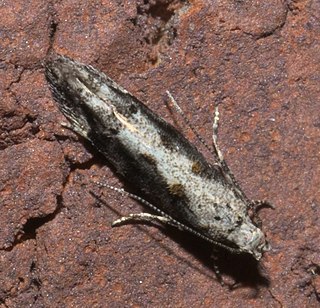
Coleotechnites is a genus of moths in the family Gelechiidae described by Vactor Tousey Chambers in 1880. One of the best known species is the lodgepole needle miner, a serious pest of forest trees in North America.

Epinotia nanana, the European spruce needleminer, is a moth of the family Tortricidae. It is found from northern and central Europe to Russia and Mongolia.

Zeiraphera ratzeburgiana, the spruce bud moth or Ratzeburg tortricid, is a moth of the family Tortricidae. It is found from northern and central Europe to eastern Russia and China. Zeiraphera ratzeburgiana is a taxonomically similar species to Zeiraphera canadensis and can only be distinguished by an anal comb found in Z. canadensis.
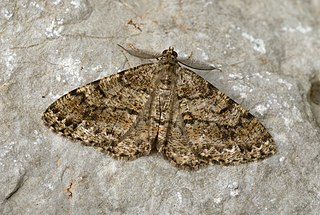
Deileptenia ribeata, the satin beauty, is a moth of the family Geometridae. The species was first described by Carl Alexander Clerck in 1759. It is found from Ireland, east through central Europe to Russia and Japan.
Coleotechnites edulicola is a moth of the family Gelechiidae. It is found in North America, where it has been recorded from New Mexico and southern Utah and possibly Colorado.
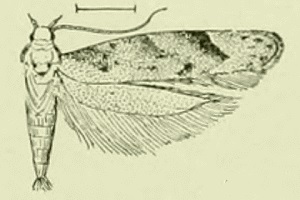
Coleotechnites piceaella is a moth of the family Gelechiidae. It is found in north-eastern United States and Canada. It is an introduced species in Europe and was first recorded from Great Britain in 1952, then Germany in 1963 and has expanded from there over all of central Europe, towards France, Italy and Hungary.
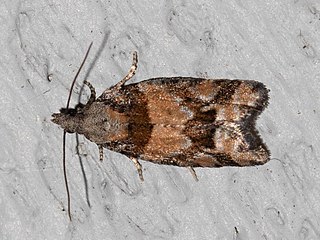
Epinotia radicana, the red-striped needleworm moth, is a species of moth of the family Tortricidae. It is found in western Canada, including British Columbia and Alberta.
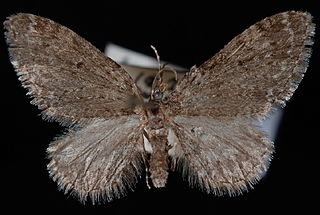
Eupithecia annulata, the larch pug moth, is a moth in the family Geometridae. The species was first described by George Duryea Hulst in 1896. It is found in North America from British Columbia north to the Yukon, east to Newfoundland and Labrador and south to California and Colorado.

Parasa pygmy is a moth of the family Limacodidae. It is found in Taiwan, inhabiting mountains, at altitudes ranging from 2,000 to 3,000 meters.
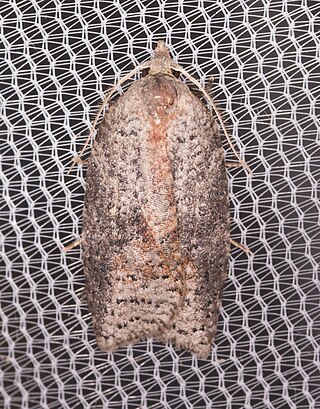
Amorbia humerosana, the white-lined leafroller, is a species of moth of the family Tortricidae. It is found from the Gulf states to the northeastern United States and southeastern Canada.
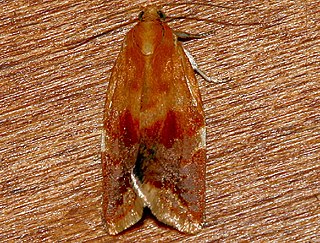
Clepsis persicana, the white triangle tortrix or the green needleworm, is a species of moth of the family Tortricidae. It is found in North America, where it has been recorded from Alaska and British Columbia to Newfoundland and south to Virginia and west to California. The habitat consists of coniferous and mixed coniferous forests.

Acleris abietana, the Perth button, is a species of moth of the family Tortricidae. It is found in Europe, where it has been recorded from Great Britain, Ireland, France, Belgium, the Netherlands, Germany, Denmark, Austria, Switzerland, Italy, the Czech Republic, Slovakia, Slovenia, Poland, Hungary and Russia. The habitat consists of coniferous woodlands.
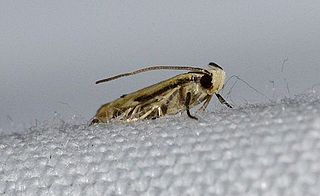
Coleotechnites variiella is a moth of the family Gelechiidae. It is found in the United States, where it has been recorded from Illinois, Indiana, Kentucky, Maryland, North Carolina, Ohio, South Carolina and Texas.
Coleotechnites albicostata, the white-edged coleotechnites moth, is a moth of the family Gelechiidae. It is found in North America, where it has been recorded from Alabama, Maryland, Mississippi, New Jersey, North Carolina, Ontario and Tennessee.
Coleotechnites martini is a moth of the family Gelechiidae. It is found in North America, where it has been recorded from Ontario and Maine.
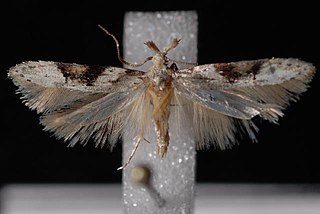
Coleotechnites atrupictella is a moth of the family Gelechiidae. It is found in North America, where it has been recorded from Alberta, British Columbia, Indiana, Maine, Massachusetts, Michigan, New Brunswick, Newfoundland, New York, Ontario, Pennsylvania, Saskatchewan and Washington.
Coleotechnites australis is a moth of the family Gelechiidae. It is found in North America, where it has been recorded from Alabama, Arkansas, Florida, Louisiana and Mississippi.

Coleotechnites blastovora is a moth of the family Gelechiidae. It is found in North America, where it has been recorded from Quebec, Alberta, British Columbia, New Brunswick and Saskatchewan.

Coleotechnites eryngiella is a moth of the family Gelechiidae. It is found in North America, where it has been recorded from Alabama, Florida, Illinois, Indiana, Louisiana, Mississippi, Texas and Wisconsin.

Coleotechnites starki, the northern lodgepole needle miner, is a moth of the family Gelechiidae. It is found in North America, where it has been recorded from Alberta, Arizona, British Columbia, Montana and Florida.















